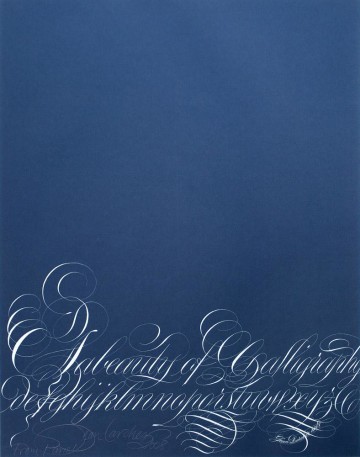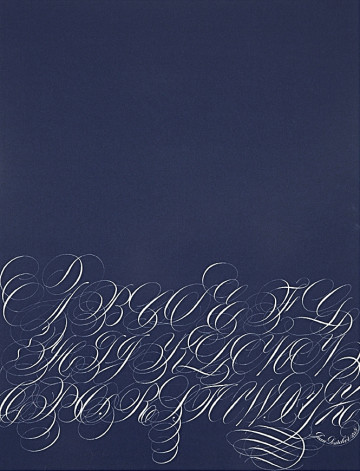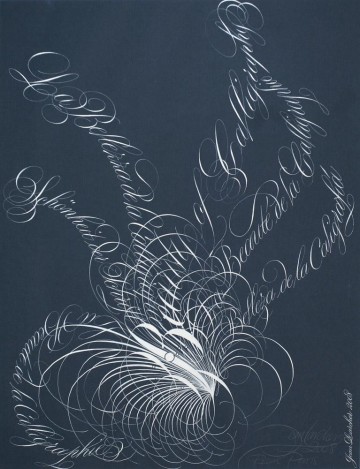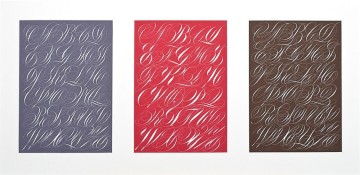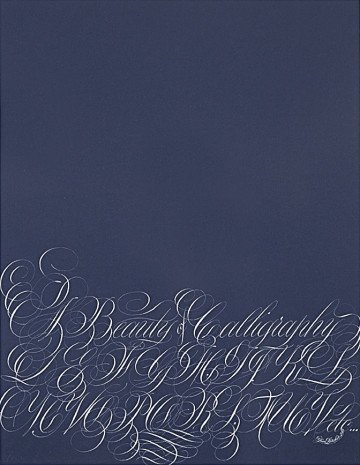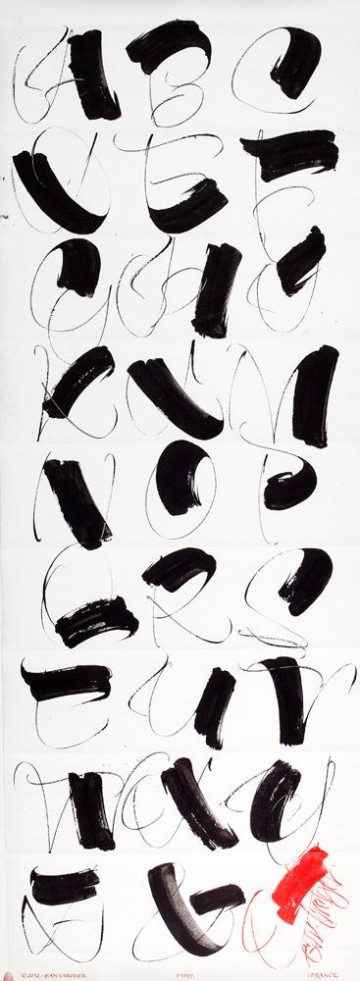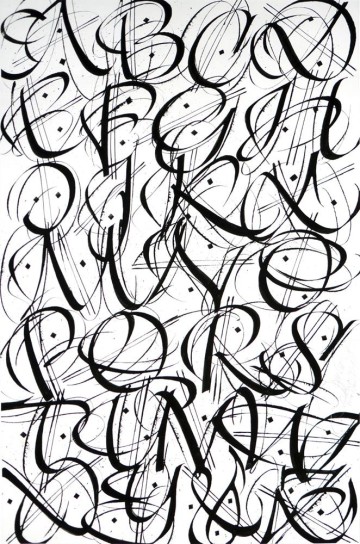Jean Larcher 1947—2015

Jean Larcher 1947—2015
Cergy-Pontoise, France
Calligrapher, teacher of calligraphy
Beauty of calligraphy
When people see a large poster in the street, when they read newspapers and books in trains or watch TV at home, in most cases they are indifferent to how the texts are designed. People read words, phrases and slogans but they do not pay attention to the form and style of letters. Consequently, people cannot distinguish a printed font and the text made in calligraphic technique manually. And just a few people who received special artistic education are able to immediately assess and determine whether a text was set up mechanically or written by hand. The reason is that calligraphy is not taught at schools anymore.
The situation was quite different before. The public had a seasoned eye; people were better educated and informed. My experience shows me that in France, for instance, the beauty of calligraphy, and Latin calligraphy in particular, is not in the focus of artistic schools, politicians, educational institutions and the general public. Starting from the 1950“s, calligraphy turned into the category of an old-fashioned mannerism and, consequently, art professions and the general public lose interest in it. Nonetheless, in the 1990's, a new generation willing to revive the forgotten art of calligraphy appeared in France! This movement grew in popularity in all English-speaking countries from the start of the 1990's.
It will be time only that will show whether or not the superb art of calligraphy will be able to stand against “heartless” technologies, or will remain the privilege of a small circle of the chosen. People who are responsible for the state of culture should take care to preserve ancient manuscripts so that the historic legacy of calligraphy will not be forgotten worldwide. I believe it is their duty to humankind.
Author works
From A to Z, a trip throughout the Roman Alphabet
Black Canson paper, different gouaches, pointed metallic pen, brush, 30x110 cm, 2009ABC (Leporello, folded book)
(created in cooperation with Katharina Pieper)
Master-class demonstrationPaper, white and colour gouache, metal pen, 222х65 cm, 2008
Bouquet.
“Beauty of Calligraphy” in five European languages
Paper, white gouache, metallic pen, 50x65 cm, 2008 Calligraphy is a remedy and mental gymnastics.



